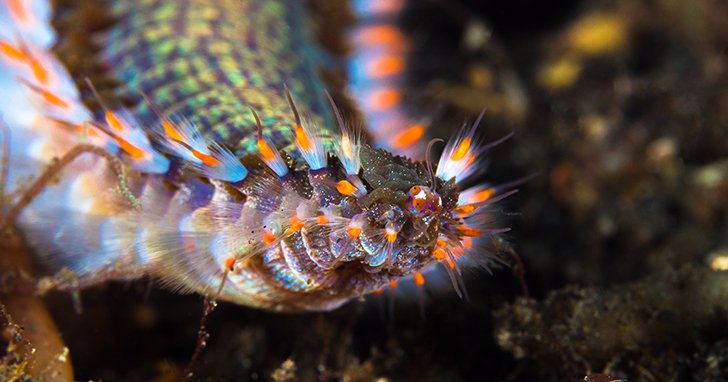
Picture this: you’ve set up a beautiful reef tank, filled with vibrant corals and flourishing live rock. Suddenly, you spot a bristle worm wriggling around. It’s enough to make anyone stop and wonder. Are they friends or foes? Here’s the thing: understanding what bristle worms do can help you decide if they’re a harmless part of your aquarium or something to manage carefully.
What Are Bristle Worms?
Bristle worms belong to the class Polychaeta, which translates to “many bristles.” These segmented worms can be found in various marine environments, including rocky shores and coral reefs. Depending on the species, they can range in size from a few inches to over a foot long! Typically, they have long, hair-like structures called chaetae, which can be both fascinating and, for some, a bit intimidating.
You might be wondering why bristle worms are in your tank in the first place. Most often, they’re hitchhikers that come in on live rock or coral. While they can seem alarming, they play a significant role in the marine ecosystem. They’re scavengers, munching on detritus, leftover food, and even decomposing matter. So, in a way, they’re cleaning up the tank, making them beneficial contributors to your aquarium’s health.
Do Bristle Worms Harm Corals?
Now, let’s get to the crux of the matter: do bristle worms actually harm corals? The short answer is usually no. Generally speaking, bristle worms are not aggressive and do not actively target healthy corals. They prefer to scavenge, and if your corals are healthy and well cared-for, these worms are unlikely to pose a threat.
However, the situation changes if your corals are stressed or damaged. If a coral is already struggling, bristle worms can exploit this weakness. They might eat away at the tissue, but this is more of an opportunistic behavior than outright aggression. Think of it like a vulture picking at a carcass—it’s not that they caused the death, but they will take advantage of the situation.
When Do Bristle Worms Become a Problem?
While bristle worms can be mostly harmless, there are certain conditions where they can become problematic. The primary red flags include:
- Overpopulation: If you see a huge number of bristle worms in your tank, it’s a sign that something might be amiss—like overfeeding or an unbalanced ecosystem.
- Coral Stress: As mentioned earlier, if your corals are not thriving, bristle worms may start to nibble on them.
- Damage from Bristles: Some bristle worms can sting with their chaetae if handled. This isn’t a direct threat to corals, but it’s a fun fact for anyone who might be tempted to reach in and remove them bare-handed!
In these cases, it might be time to take action. Monitoring your tank’s health and keeping nutrient levels in check can help keep bristle worm populations manageable.
Controlling Bristle Worm Populations
So, you’ve noticed a growing population of bristle worms, and it’s starting to make you uneasy. What can you do? Here are a few tips for managing their numbers without creating a panic:
1. **Feed Wisely:** Overfeeding can lead to an explosion of detritus, which in turn feeds bristle worm populations. Be mindful of how much food you’re putting in the tank.
2. **Regular Maintenance:** Keeping your tank clean through regular water changes and substrate vacuuming can help keep detritus at bay, limiting food sources for the worms.
3. **Introduce Predators:** Some fish species, like certain wrasses, enjoy snacking on bristle worms. However, you’ll want to ensure they won’t harm your corals in the process.
4. **Manual Removal:** For those who want to take a hands-on approach, you can use tweezers to gently pull out larger bristle worms. Just remember to wear gloves to avoid any stings!
Comparing Bristle Worms to Other Tank Cleaners
You might be curious how bristle worms stack up against other tank cleaners. There are several options out there, each with its own strengths and weaknesses. Let’s look at a few:
- Clean-Up Crew (CUC): This term refers to a mix of snails, hermit crabs, and shrimp. While they help clean up, they don’t have the same scavenging capabilities as bristle worms.
- Sea Stars: Some species, like the crown-of-thorns starfish, can be effective at controlling algae but may become problematic if populations grow too large.
- Sand Sifters: These creatures help aerate your substrate and consume detritus, but some may disturb your corals if they dig too deep.
Ultimately, finding the right balance among all these cleaners is key. Each one brings something unique to the table, and incorporating a variety can lead to a healthier tank overall.
In summary, bristle worms aren’t the villains they might seem at first glance. While they can potentially harm stressed or unhealthy corals, they usually play a valuable role in maintaining your aquarium’s ecosystem. By keeping an eye on their population and ensuring your tank remains balanced, you can enjoy the benefits they provide without the worry.
So, the next time you spot a bristle worm, take a moment to appreciate this tiny scavenger. After all, in the world of aquariums, it’s not just about aesthetics but also about symbiosis and balance. Happy reefing!
